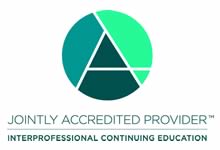
This activity is intended for healthcare providers delivering care to women and their families.
After completing this activity, the participant should be better able to:
1. Discuss the key elements in the work up for patients with heart failure
2. Describe the various treatment approaches for patients with heart failure
Estimated time to complete activity: 0.5 hours
Postgraduate Institute for Medicine (PIM) requires faculty, planners, and others in control of educational content to disclose all their financial relationships with ineligible companies. All identified conflicts of interest (COI) are thoroughly vetted and mitigated according to PIM policy. PIM is committed to providing its learners with high quality accredited continuing education activities and related materials that promote improvements or quality in healthcare and not a specific proprietary business interest of an ineligible company.
The PIM planners and others have nothing to disclose. The OBG Project planners and others have nothing to disclose.
Faculty: Susan J. Gross, MD, receives consulting fees from Cradle Genomics, and has financial interest in The ObG Project, Inc.
Planners and Managers: The PIM planners and managers, Trace Hutchison, PharmD, Samantha Mattiucci, PharmD, CHCP, Judi Smelker-Mitchek, MBA, MSN, RN, and Jan Schultz, MSN, RN, CHCP have nothing to disclose.
Fees for participating and receiving CME credit for this activity are as posted on The ObG Project website. During the period from 12/01/2022 through 12/01/2024, participants must read the learning objectives and faculty disclosures and study the educational activity.
If you wish to receive acknowledgment for completing this activity, please complete the test and evaluation. Upon registering and successfully completing the test with a score of 100% and the activity evaluation, your certificate will be made available immediately.

In support of improving patient care, this activity has been planned and implemented by the Postgraduate Institute for Medicine and The ObG Project. Postgraduate Institute for Medicine is jointly accredited by the Accreditation Council for Continuing Medical Education (ACCME), the Accreditation Council for Pharmacy Education (ACPE), and the American Nurses Credentialing Center (ANCC), to provide continuing education for the healthcare team.
Postgraduate Institute for Medicine designates this enduring material for a maximum of 0.5 AMA PRA Category 1 Credit(s)™. Physicians should claim only the credit commensurate with the extent of their participation in the activity.
The maximum number of hours awarded for this Continuing Nursing Education activity is 0.5 contact hours.
Designated for 0.25 contact hours of pharmacotherapy credit for Advance Practice Registered Nurses.
Read Disclaimer & Fine PrintHeart failure (HF) is a broad term that encompasses many different etiologies and degrees of cardiac dysfunction, but generally refers to impairment of blood flow through the heart. Americans over 40 have a 20% lifetime risk of developing HF. It is associated with considerable morbidity and mortality, and accounts for approximately 1M hospitalizations annually; it is also a major cause of hospital readmission. The 2013 ACC/AHA Guideline for the Management of Heart Failure (with focused updates in 2016 and 2017) offers a comprehensive guide to treating this common condition.
Note: HFrEF and HFpEF are not mutually exclusive | Patients often have combined systolic and diastolic dysfunction
Guideline-directed medical therapy (GDMT) Is Tailored According to Severity of Disease
ACE inhibitors (ACEI): Associated with mortality benefit
Beta blockers: Associated with mortality benefit
Aldosterone antagonists: Mortality benefit for NYHA II-IV with EF≤35%
Loop diuretics: Indicated for Stages C-D for relief of symptoms due to fluid overload; no known effect on mortality
Other medications
Drugs to avoid
2013 ACCF/ACA Guideline for the Management of Heart Failure
2016 ACC/AHA/HFSA Focused Update on New Pharmacologic Therapy for Heart Failure
2017 ACC/AHA/HFSA Focused Update of the 2013 ACCF/ACA Guideline for the Management of Heart Failure
Take a post-test and get CME credits
TAKE THE POST TESTAre you an
ObG Insider?
Get specially curated clinical summaries delivered to your inbox every week for free
Please log in to ObGFirst to access this page
OBG Project CME requires a modern web browser (Internet Explorer 10+, Mozilla Firefox, Apple Safari, Google Chrome, Microsoft Edge). Certain educational activities may require additional software to view multimedia, presentation, or printable versions of their content. These activities will be marked as such and will provide links to the required software. That software may be: Adobe Flash, Apple QuickTime, Adobe Acrobat, Microsoft PowerPoint, Windows Media Player, or Real Networks Real One Player.
This educational activity may contain discussion of published and/or investigational uses of agents that are not indicated by the FDA. The planners of this activity do not recommend the use of any agent outside of the labeled indications.
The opinions expressed in the educational activity are those of the faculty and do not necessarily represent the views of the planners. Please refer to the official prescribing information for each product for discussion of approved indications, contraindications, and warnings.
Participants have an implied responsibility to use the newly acquired information to enhance patient outcomes and their own professional development. The information
presented in this activity is not meant to serve as a guideline for patient management. Any procedures, medications, or other courses of diagnosis or treatment discussed or suggested in this activity should not be used by clinicians without evaluation of their patient’s conditions and possible contraindications and/or dangers in use, review of any applicable manufacturer’s product information, and comparison with recommendations of other authorities.
It appears you don't have enough CME Hours to take this Post-Test. Feel free to buy additional CME hours or upgrade your current CME subscription plan
You are now leaving the ObG website and on your way to PRIORITY at UCSF, an independent website. Therefore, we are not responsible for the content or availability of this site
